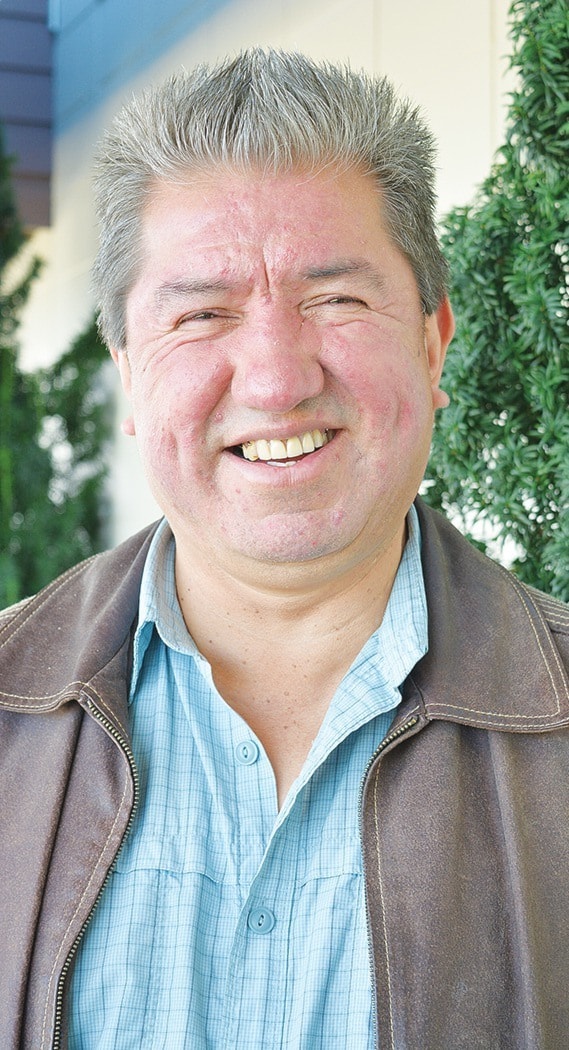A First Nations radio station could be coming to the Campbell River area.
The application for a broadcasting licence has been made, letters of support have been received and the next hurdle is a Canadian Radio-television and Telecommunications Commission (CRTC) consultation hearing May 16 in Vancouver.
According to the CRTC, the station would be a Type B Native FM radio station and would operate at 100.7 MHz (channel 264C1). The Aupe Cultural Enhancement Society proposes to broadcast 126 hours of local programming each broadcast week, with a minimum of six hours in the K’omoks language.
Society member Darren Blaney approached Campbell River council asking for a letter of support, and at its March 21 meeting, council voted to send a letter supporting the radio station.
Blaney is currently in his fourth term on the Homalco First Nation council and he was chief for six years.
He says they had a licence for a radio station when he was chief but the next chief didn’t pursue it. Fast forward to 2015 and Blaney became connected to Bob Morris, a professor at Capilano University, and started pursuing the idea again.
“Funny enough, this professor from Capilano University was wondering how come First Nations don’t have licences so he looked up the CRTC and he found our licence and he spoke to someone who knew me and we got connected,” said Blaney.
About six months ago, Blaney and Morris sent a letter to the CRTC applying for a broadcasting licence and they heard back a month later.
“We got a letter back in November from CRTC saying they would do all that they can to get us our licence,” he said, adding with a laugh: “From there, it’s been kind of a mad scramble.”
Blaney says he tried to work with the Homalco council to get the radio station going through the council but they were too busy, and the CRTC said it had to be done through a society, so he got together the Aupe Cultural Enhancement Society. Along with Blaney, the society’s directors are Mavis Coupal, Gerald Joseph, Rebecca Blaney and Corina Wilson.
The CRTC then said the society needed support letters, and Blaney approached Campbell River Mayor Andy Adams, North Island MLA Claire Trevena and the Naut’sa mawt Tribal Council, which represents 11 First Nations including the Homalco, and received support from them all.
“So far, there’s no opposition to our radio station,” said Blaney.
When it comes to the radio station’s format, Blaney thinks it should involve the environment, climate change, aboriginal rights, and culture.
Blaney says a lot of community members and youth are interested in being DJs, so aboriginal music will be part of the station as well.
“We’ve got a lot of musicians around, so I thought it might be kind of neat for them to have a jam night or something,” he said.
Some people from Tla’amin were suggesting a word of the day feature as well.
“Our language is K’omoks dialect, but the coverage of the area goes from Campbell River to Port Hardy and then from Port Hardy all the way down to Nanaimo, so it’s quite a lot of language groups,” said Blaney.
The station would provide jobs for aboriginal community members, as they’ll need a manager, reporters and other positions, and Blaney hopes it will support aboriginal culture.
“For me, when we formed the society, the purpose of the society was to address cultural issues but also, it deals with the effects of residential schools,” he said. “The radio station, part of its profits when it starts making money, part of it will go to youth and part of it will go to culture and parts will go to healing and hopefully it will help support people in their whatever capacity building, whether that’s education or business.”
Blaney recalls that when he first applied for the radio station licence when he was chief, it was mostly about economic development.
“Back when I was chief, I was thinking that economic development was the answer to all of our problems as First Nations,” he said. “But when I look at it now, it’s more that we need to do some healing, that they need to kind of go hand in hand, healing and economic development.
“Part of that healing is our culture. We have to have our culture and right now, because of residential schools and social problems, there’s a lot of shame around being First Nations, so we need to heal that and it needs a lot of work. And we need to help our people restore some of that pride and start to build up again.”
